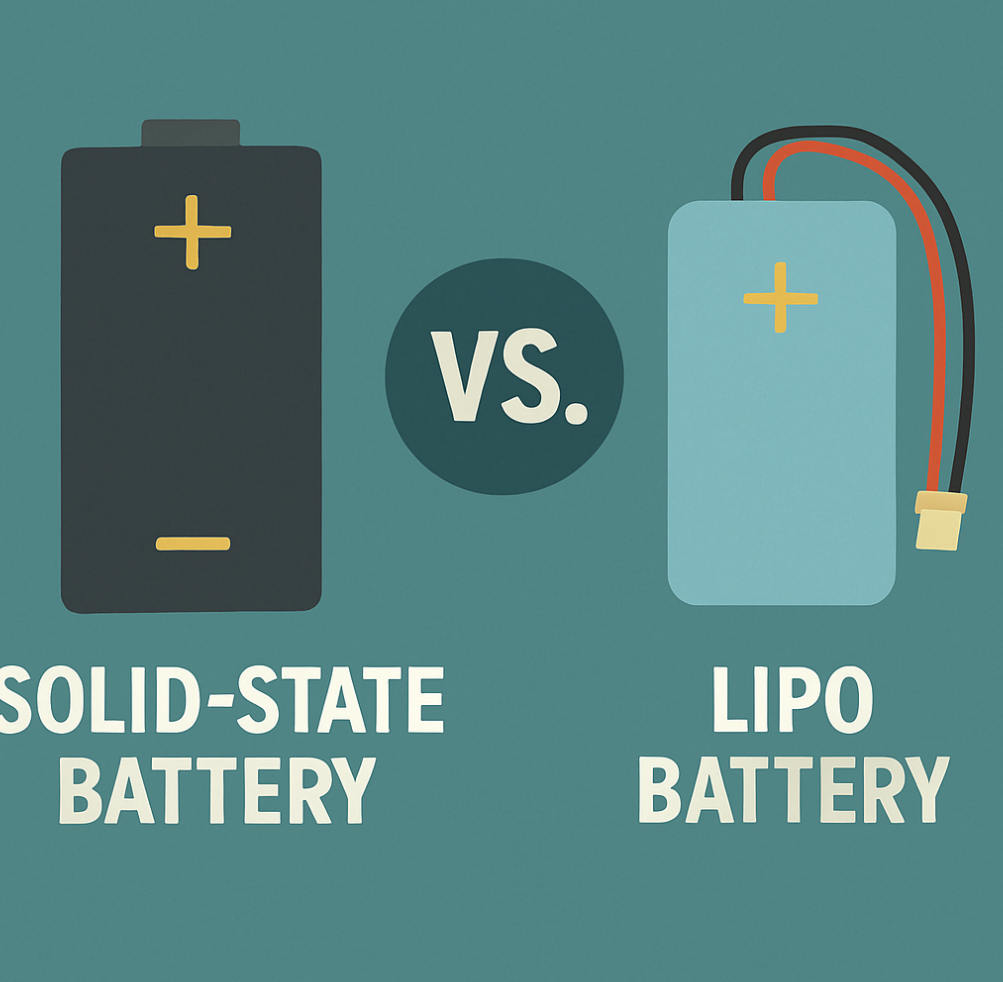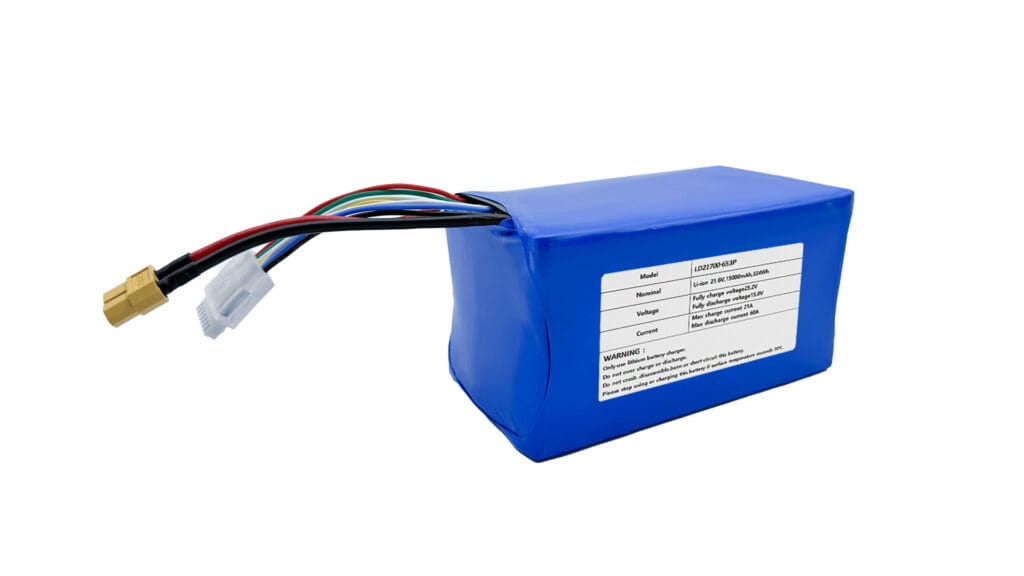Введение
In our increasingly mobile and electrified world, battery technology sits at the heart of innovation. From the smartphones in our pockets to the electric vehicles (EVs) on our roads, efficient and reliable energy storage is paramount. For years, Lithium Polymer (LiPo) batteries have been the workhorse for a vast array of applications, prized for their relatively high energy density and design flexibility. However, a new contender is emerging on the horizon: Solid-State Batteries (SSBs). Promising enhanced safety, potentially higher energy density, and longer lifespans, SSBs are generating considerable excitement.
This article will delve into a comprehensive comparison of solid-state battery vs lipo battery, exploring their fundamental differences, advantages, and disadvantages, and what the future might hold for these crucial energy storage technologies.
Understanding LiPo Batteries
What are LiPo Batteries?
Lithium Polymer batteries are a type of lithium-ion battery that utilizes a polymer gel electrolyte instead of a liquid electrolyte. This gel acts as the conductive medium that allows lithium ions to move between the anode and the cathode during charging and discharging. The use of a polymer electrolyte allows for more flexible and lightweight designs compared to traditional lithium-ion batteries with liquid electrolytes.
Key Characteristics and Performance of LiPo Batteries
LiPo batteries typically offer an energy density ranging from 150 to 265 Wh/kg. This makes them suitable for applications where weight and size are critical. In terms of safety, while generally reliable, LiPo batteries are susceptible to thermal runaway if damaged, overcharged, or overheated, which can lead to fires. Their cycle life usually ranges from От 500 до 1000 циклов at 80% of their initial capacity. Charging speeds vary depending on the battery and charger, but advancements continue to improve these rates. A key advantage of LiPo technology is its form factor flexibility, allowing manufacturers to create batteries in various shapes and sizes to fit specific device designs.
Области применения LiPo аккумуляторов
The versatility of LiPo batteries has led to their widespread adoption in numerous applications, including:
- Smartphones and Portable Electronics: Their lightweight and customizable shapes make them ideal for powering mobile devices, tablets, and laptops.
- Беспилотники и RC-мобили: The high energy density-to-weight ratio is crucial for the flight time and performance of drones and remote-controlled devices.
- Некоторые электромобили: While less common as the primary high-voltage battery in mainstream EVs, LiPo batteries can be found in some earlier models or as auxiliary batteries.
Понимание твердотельных аккумуляторов
What are Solid-State Batteries?
Solid-State Batteries represent a significant departure from traditional lithium-ion technology by replacing the liquid or polymer gel electrolyte with a solid electrolyte. This solid material can be ceramic, glass, or a solid polymer. This fundamental change promises to address some of the limitations of current battery technologies.
Key Characteristics and Potential Performance of Solid-State Batteries
One of the most touted benefits of solid-state batteries is their potential for Более высокая плотность энергии, with future targets exceeding 500 Wh/kg. The solid electrolyte inherently offers enhanced безопасность by eliminating the flammable liquid found in LiPo batteries, significantly reducing the risk of leaks and thermal runaway. Early research suggests that SSBs could also offer a longer cycle life and the potential for faster charging speeds due to the properties of the solid electrolyte. Furthermore, some solid electrolytes may enable a wider operating temperature range.
Potential Applications of Solid-State Batteries
The unique characteristics of solid-state batteries make them highly attractive for several key applications:
- Электромобили: The increased safety and potential for higher energy density and faster charging are major drivers for their adoption in the EV industry.
- Накопители энергии в масштабах сети: The enhanced safety and lifespan could make SSBs a viable option for large-scale energy storage solutions.
- Potentially Safer Portable Electronics: While LiPo is prevalent, the added safety of solid-state could be beneficial in devices prone to damage.
Solid-State Battery VS LiPo Battery: Key Differences Compared
Electrolyte Material: Solid vs. Liquid/Polymer
The core difference lies in the electrolyte. LiPo batteries use a polymer gel, which, while more stable than liquid electrolytes in traditional Li-ion batteries, still presents a flammability risk. Solid-state batteries, with their ceramic, glass, or solid polymer electrolytes, eliminate this risk, leading to inherently safer operation. This solid structure also contributes to potentially better ionic conductivity and stability at higher temperatures.
Safety: Addressing Thermal Runaway and Leakage
Safety is a significant advantage for solid-state batteries. The absence of a flammable liquid electrolyte drastically reduces the likelihood of thermal runaway, a dangerous chain reaction that can lead to fires in LiPo batteries if they are punctured or mishandled. Solid electrolytes are also less prone to leakage, further enhancing safety and the longevity of the battery.
Energy Density and Performance
Currently, LiPo batteries hold a competitive edge in terms of readily available high energy density for many applications. However, solid-state batteries have the theoretical potential for significantly higher energy densities because the solid electrolyte can allow for the use of more energy-dense electrode materials and potentially thinner separators. This could translate to EVs with longer ranges and smaller, lighter batteries for portable devices.
Lifespan and Cycle Life Expectancy
Early research and development suggest that solid-state batteries could offer a longer cycle life compared to LiPo batteries. The solid electrolyte can be more stable over repeated charging and discharging cycles, potentially leading to batteries that last longer before degrading.
Cost and Scalability
Currently, LiPo battery technology is more mature and benefits from economies of scale, making them generally more cost-effective. Solid-state battery production is still in its early stages, and the cost of manufacturing is higher. However, as the technology matures and production scales up, the cost of solid-state batteries is expected to decrease. Scalability remains a key challenge for widespread adoption.
Form Factor and Design Flexibility
LiPo batteries currently offer greater flexibility in terms of form factor due to the pliability of the polymer gel electrolyte. This allows them to be shaped to fit the specific design constraints of various devices. While solid-state batteries are progressing, achieving the same level of form factor flexibility with solid electrolytes can be more challenging.
The Future Outlook: Solid-State Batteries on the Horizon
The development of solid-state batteries is rapidly advancing, with numerous companies and research institutions actively working on overcoming the challenges related to scalability and cost. Automakers are particularly interested in the potential of SSBs to deliver safer, longer-range electric vehicles. While widespread commercial availability is still a few years away, the progress is promising. Collaborations between battery developers and automotive manufacturers are accelerating the testing and integration of solid-state technology. The impact of SSBs could extend beyond EVs, potentially revolutionizing energy storage across various sectors.
ЧАСТО ЗАДАВАЕМЫЕ ВОПРОСЫ
- Q1: What is the main difference between a solid-state battery and a LiPo battery?
- The primary difference is the electrolyte: LiPo batteries use a polymer gel, while solid-state batteries use a solid material (ceramic, glass, or solid polymer).
- Q2: Are solid-state batteries safer than LiPo batteries?
- Generally, yes. The solid electrolyte in SSBs is non-flammable, significantly reducing the risk of thermal runaway compared to LiPo batteries.
- Q3: Do solid-state batteries have a longer lifespan than LiPo batteries?
- Early indications suggest that solid-state batteries have the potential for a longer cycle life due to the stability of the solid electrolyte.
- Q4: When will solid-state batteries be widely available?
- While there’s no definitive timeline, many experts anticipate wider adoption in the latter half of this decade, particularly in electric vehicles.
- Q5: Are LiPo batteries still a good choice?
- Yes, LiPo batteries are a mature and effective technology widely used in portable electronics and some EVs, offering a good balance of energy density and form factor flexibility.
- Q6: Which battery type has a higher energy density?
- Currently, LiPo batteries have a competitive energy density in many applications. However, solid-state batteries have the potential for significantly higher energy densities in the future.
Заключение
In the ongoing quest for better energy storage, both Lithium Polymer and Solid-State batteries play crucial roles. LiPo technology has served us well, powering our mobile lives with its versatility. However, solid-state batteries represent an exciting leap forward, promising enhanced safety and the potential for superior performance, particularly in demanding applications like electric vehicles. While challenges in cost and scalability remain, the trajectory of solid-state battery development suggests a future where safer, more energy-dense power sources become the norm.





